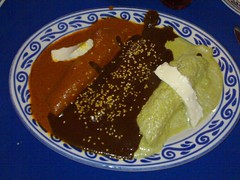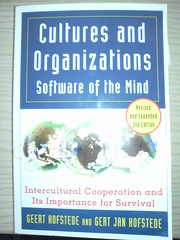- BBC Estudio 834: Interviews to Latin American personalities.
- Byte, tecnología aplicada… a la vida: Tecnology news.
- De Standaard – Overstekend Wild: Flemish editorial. Listen to it just to get used to the sound of the language.
- Dixo.com – Abel Membrillo: One of the radio DJs with the best voice in Mexican radio history. Talks about poetry and whatever comes to his mind.
- Dixo.com – Eduardo Arcos: Technology by one of the most renowned Latin American commentators.
- Dixo.com – Fernanda Tapia: Another radio DJ from Mexico City. Don’t necessarily agree with her, but it’s good to hear something different once in a while.
- Dixo.com – Muñecón: A very funny, sometimes deep commentator.
- Dixo.com – Sopitas: A radio DJ that used to work in Radioactivo, a legendary Mexico City station. Usually talks about music and sports.
- Dixo.com – Trujo: Another radio DJ that talks about personal experiences.
- Dixo.com – Warpig: A former Radioactivo DJ as well, talks about politics and music. I’d rather have him stick to music.
- Dixo.com – Sputnik: The podcast of a Mexican technology magazine.
- El Podcast the Olallo Rubio: The enfant terrible of Mexican radio, and also a Radioactivo alumni. This is one of the most popular podcasts in Mexico.
- En la Historia: Different topics viewed from a historical perspective.
- From Our Own Correspondent: One of the best programmes from the BBC. In-depth views from BBC correspondents the world over.
- Imposible estar de acuerdo: The sound desing is really annoying, but the program is quite good. Editorial opinions from mostly Mexican politics.
- In our time: A great History podcast from the BBC.
- La Libre.be Focus: Good international affairs podcast. Also useful to practise French as I know what they are talking about.
- Locura por el Futbol: Sometimes annoying, but good Mexican football podcast.
- Más allá de las Fronteras: International affairs podcast.
- mediotiempo.com – Sopitas: El Sopitas again, this time focusing only in football.
- Narraciones de Paco Calderón: One of Mexico’s most famous cartoonists also worked in the radio. Here’s a selection.
- Patada y Gol: Another football podcast from Mexico.
- PodCasting Brasil: Caroço: Another football podcast, this time from Brazil.
- Päivä Tunnissa – YLE Radio Peili: The day’s news from Finland.
- Rai international podcast: Mostly cinema commentary in Italian.
- Rebelión: New independent rock bands from Mexico.
- Rimbombante, el podcast: Explanation of usage of difficult Spanish-language words.
- Suena en el estéreo con Rulo: Another ex-Radioactivo DJ introduces new music every week.
- Tagesschau Video-Podcast: Daily news video podcast from German channel ARD.
- Testigos del Crimen: Criminology and crime psicology. Reality is weirder than fiction.
- Trailercast.tv: Movie Trailers Podcast
“Las Flores” por Café Tacuba
Ay...
Ven y dime todas esas cosas,
invítame a sentarme junto a ti.
Escucharé todos tus sueños
en mi oido.
Y déjame estrechar tus manos,
y regalarte unas pocas de ilusiones.
Ay, ven y cuéntame una historia
que me haga sentir bien.
Yo te escucharé
con todo el silencio del planeta,
y miraré tus ojos
como si fueran los últimos de este país.
Ay...
Déjame ver cómo es que floreces
con cinco pétalos te absorberé,
cinco sentidos que te roban
sólo un poco de tu ser.
Y seis veces para vivirte
debajo de una misma luna,
y otras nueve pasarán
para sentir que nuevas flores nacerán.
Y que cada estrella
fuese una flor,
y así regalarte
todo un racimo de estrellas.
No dejes que amanezca,
no dejes que la noche caiga,
no dejes que el sol salga,
sólo dejame estar junto a tí.
A Paco Calderón cartoon for the weekend
Language and national character
After reading this book and some other materials for my intercultural management I’ve been able to slightly refine an old idea I had about how different languages express and modify the characters of the people that use it. Even though I’m not a linguist I think it’s relatively accurate for some, for others I might as well get grilled. Comments are more than welcome.
- English: good for business and action-oriented. Also good for fantasising.
- Italian: temperamental.
- French: philosophical.
- Finnish: communicate the largest amount of information in the shortest amount of words possible. Also good for creating words.
- German: precise, pünktlich.
- Portuguese: playful, but at the same time rather melancholic.
- Spanish: baroque, but also depends on the speaker. Spanish speakers use it in a much more direct way than, say, Mexican speakers (because their culture is much more direct).
- Dutch: I’m having my first class today, so maybe I’ll be able to tell you something in a year.
Could a Japanese speaker please explain what does no mean?
Cafe Tacuba
One of my favourite bands and arguably one of the most popular in Latin America, Cafe Tacuba was formed in the late 80’s in Ciudad Satelite, Naucalpan, Estado de Mexico (a suburb of Mexico City very close to where I grew up). Their music is very eclectic with influences from rock, ska, norteña, hip hop, ballad, metal, tango, ranchera, etc., and cannot be rigidly classified as Rock en Español (it is said that not two of their songs are in the same genre). Even though they sing entirely in Spanish, they also have a loyal anglophone following. In their tours they have filled stadiums and other concert venues around Spanish-speaking Latin America, one of the most notorious was packing over 120,000 people in the Zocalo (main square) of Mexico City. Below you can find examples of their music:
Puntos Cardinales (Cuatro Caminos, 2003)
Other videos available:
Rarotonga (Cafe Tacuba, 1992)
Ingrata (Re, 1994)
El Ciclon, (Re, 1994)
Las Flores (Re, 1994)
Alarmala de Tos (Avalancha de Exitos, 1996)
Chilanga Banda (Avalancha de Exitos, 1996)
Como te Extraño (Avalancha de Exitos, 1996)
Dos Niños (Reves/Yo Soy, 1999)
El Ave (Reves/Yo Soy, 1999)
Dejate Caer (Vale Callampa EP, 2002)
Eres (Cuatro Caminos, 2003)
More information in Wikipedia or at their official site.
Rock en Español
Taken from Wikipedia:
“Spanish language rock and roll (Spanish: Rock en Español) borrows heavily from American, British, Irish, and Australian rock and roll music and from traditional and popular music of Spanish-speaking cultures (cumbia, ranchera, rumba, tango, etc) and has evolved from a cult-like music movement to a more well established music genre. Today, rock en español includes bands from all over Latin America (with especially strong rock scenes in Mexico and Argentina), France, Spain, and the United States.”
During the next few posts I’ll try to give an introduction to Rock en Español for the uninitiated.
How to tell if you’re from X
Similar to the post below, I came accross this page before. It’s very good, and quite accurate for the countries I know.
You know you’ve been too long in X when…
A collection of “You know you’ve been too long somewhere” lists:
- Belgium
- Finland
- Mexico
- Japan
- China
- Switzerland
- United Kingdom
- United Arab Emirates
- Malaysia
- Korea
- South Africa
Enjoy!
Recommended book: “Cultures and Organizations: Software of the Mind”
I just finished reading this book for my class of Intercultural Management, and I really liked it. There is only one thing that I don’t really understand, and that’s the Uncertainty Avoidance Index, because in my experience Latin Americans are much better at handling unknowns and improvising than say, Northern Europeans, but the book says that Uncertainty Avoidance is much higher in Latin countries than it is in Northern Europe. Will have to think about it.
Another thing I realised is that I understand now why I was able to adapt so well to living in Finland (and now Belgium): I was not raised so much as a Mexican. While growing up my home environment was much more conductive to discussion, and my parents always insisted on us being independent. I’m very glad for that.
Mexican food abroad
This is a theme that I’ll keep on talking about, so bear with me. I was looking for some other information when I saw this article (The taco that ate Sweden). Whereas the situation is something that I definitely encountered before when I lived in Finland, I really feel the urge to educate all those that can read this that hard shell tacos are not Mexican. In fact, as the article says, most Mexican food found outside of North America is as Mexican as I’m Russian, i.e. not very much, and finding restaurants that don’t have nachos with cheese in their menu is really hard (there are some honourable exceptions such as La Fonda de la Madrugada in Tokyo or La Panza es Primero in Madrid). As for the ingredients, it’s easier just to ask a Mexican where to get them or just bring them over.
Tex-Mex food can be good food, but it’s not Mexican!

